CULTURAL STORY embrace your
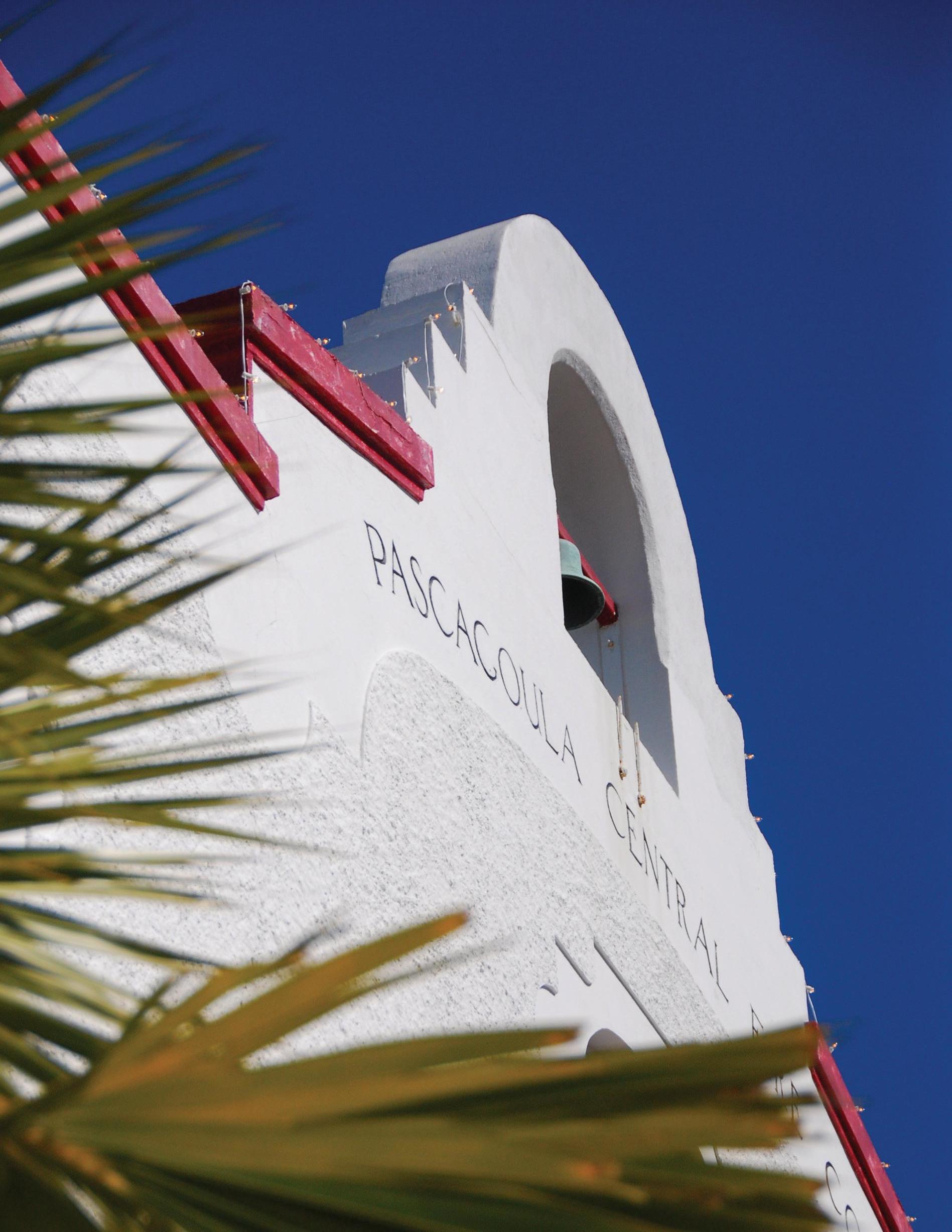
YESTERDAY • TODAY • TOMORROW
MISSISSIPPI GULF COAST NATIONAL HERITAGE PUBLICATION | SUMMER 2021
welcome FROM OUR DIRECTOR
Summer is here on the Mississippi Gulf Coast, and I think everyone is ready! Some fun activities to do this summer may include beach sunsets, dinner cruises, fishing and crabbing along the piers and, of course, fresh shrimp boils with friends and family. As the coast gets back to normal, there is so much to do and see. I hope you get out and take part in our great festivals, summer concerts and don’t forget to visit one of our fresh farmers markets. Summer on the Coast is all about life on the water, I know my boys seize every opportunity to drop a hook in the water or kayak down one of our Blueways. I hope you get a chance to experience life on the water, eat some fresh seafood or just relax while enjoying the AC in one of our many museums. So, mold some clay, take a cooking class, learn to sail or pick fresh vegetables. This summer the Coast is your oyster!
If you are out this summer and see our table at an event, come by and say hi. Also, if you have a great historic, innovative, natural or flavorful story to share send it to us at heritage@dmr.ms.gov and it may appear as a future Embrace article.
MISSISSIPPI DEPARTMENT OF

MARINE RESOURCES
Joe Spraggins, Executive Director
Rhonda Price, MS Coast NHA Director
Andrew Barrett, Heritage Coordinator
Jeff Rosenberg, Heritage Coordinator
RoxAnn Wicker, Communications Coordinator
Francesca Linthicum, Marketing Manager
Joyce Hart, Administrative Assistant

Marie Lewis, Administrative Assistant
U.S. SENATORS
Cindy Hyde-Smith
702 Hart Senate Office Building
Washington, DC 20510
Phone: (202) 224-5054
Roger Wicker
555 Dirksen Senate Office Building
Washington, DC 20510
Phone: (202) 224-6253
U.S. REPRESENTATIVE (DISTRICT 4)
Steven Palazzo
2349 Rayburn House Office Building
Washington, DC 20515
Phone: (202) 225-5772
DOWNLOAD THE MGCNHA APP!

Discover the cultural, historical and natural treasures of the Mississippi Gulf Coast National Heritage Area. From museums and historic sites, to year-round festivals an miles of sandy beaches, we have it all.
 Rhonda Price MGCNHA Director
Cover photo:
Rhonda Price MGCNHA Director
Cover photo:
MISSIONour

ENHANCE, CONSERVE AND PROVIDE CONNECTIVITY to cultural resources of a unique and defined area through identification, interpretation and promotion.
CREATE AUTHENTIC EXPERIENCES
and serve as a source of pride. Providing increased awareness and appreciation of their environment, history, culture, traditions and lifestyles.

PROMOTE ECONOMIC SUSTAINABILITY of heritage resources that benefit the entire region and support the long-term enhancement and conservation of those qualities that make the six counties of the MS Coast NHA unique.
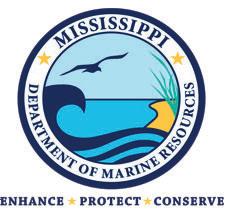

TELLING THE AREA’S NATIONALLY SIGNIFICANT STORY to residents and visitors through activities and partnerships that celebrate the area’s unique history, people, traditions and landscapes.
Your MS Coast NHA is a partnership of communities, businesses, governmental agencies, non-profit organizations and individuals who value the region’s rich cultural and environmental diversity, history, natural beauty and traditions.




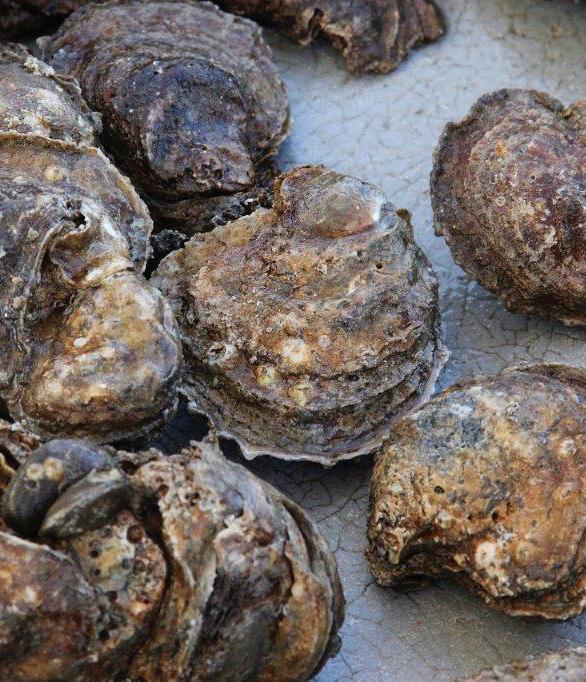

CONTENTS HISTORICAL 4 Smithsonian Museum Coming to Waveland’s Ground Zero Hurricane Museum 6 Two New Nominations to the Variety of Gulf Coast History 8 Summer at the CharnleyNorwood House FLAVORFUL 9 Summer Time and Cherry Pie INNOVATIVE 12 The Port of Gulfport and its First Commercial Ship 16 Gulf Coast Outpost: Business Spotlight 18 Gulf Coast Outpost: Welcome to New Inductees 19 The Night the Lights Came On NATURAL 20 Blueway Spotlight LIFE 22 Eating Oysters in Months without an “R” 24 Mississippi Coast Heritage Community: Grants Update EVENTS 25 Crossroads: Changes in Rural America; Biloxi Seafood Festival; Paddle Paradise 6 12 9 16 22 25

SMITHSONIAN MUSEUM COMING TO GROUND ZER
BY: ANDREW BARRETT

With partial funding through a Mississippi Gulf Coast National Heritage Area grant, the Waveland Ground Zero Hurricane Museum will host an exhibition and lecture series this summer that should be on everyone’s to-do list before it closes in the middle of August this year. The museum has been expressly chosen by the Mississippi Humanities Council to host the traveling exhibition Crossroads:ChangeinRuralAmerica . The exhibition is part of Museum on Main Street, a unique collaboration between the Smithsonian Institution Traveling Exhibition Service (SITES), state humanities councils across the nation and local host institutions. The exhibition will tour six (6) communities in Mississippi, and Waveland is the only host site on the Coast.
Crossroads:ChangeinRuralAmerica offers small towns a chance to look at their own paths to highlight the changes that affected their fortunes over the past century. The exhibition will prompt discussions about what happened when America’s rural population became a minority of the country’s population and the ripple effects that occurred.
Despite the massive economic and demographic impacts brought on by these changes, America’s small towns continue to creatively focus on new opportunities for growth and development. Economic innovation and a focus on the cultural facets that make small towns unique, comfortable and desirable have helped many communities create their own renaissance. The future is bright for much of rural America as small towns embrace the notion that their citizens and their cultural uniqueness are important assets.
In addition to the Smithsonian exhibit that will focus on themes such as rural identity, land use, sense of community, persistence and the ability to manage change, the Waveland Ground Zero Hurricane Museum will have temporary exhibits depicting areas in Hancock County, Miss., complementing the Crossroads national installation. This will be in addition to their permanent exhibits featured at the museum. A series of lectures will also take place at various venues throughout Hancock County. The lecture series will feature speakers with an abundance of knowledge on the development of different regions within the county, and each lecture will augment the local exhibits of Hancock County on display at the museum.
Whether you are a coastal resident, history buff or just passing through town, this is an opportunity you will not want to miss that promises plenty of intrigue while exploring our collective story as our communities have evolved over the last 100 years. The exhibition will open on July 3 at the Waveland Ground Zero Hurricane Museum and will close on August 14. The lecture series will take place at various venues throughout the county during July and August.
A complete calendar of events and a description of the lecture series can be found at wavelandgroundzero.com or at facebook.com/WavelandGZM.
For questions about the museum exhibition or lecture series, contact the Waveland Ground Zero Hurricane Museum’s Bernadette Cullen at tcbbcullen@yahoo.com.

| Embrace Your Cultural Story
The Waveland Ground Zero Hurricane Museum will host a Smithsonian Institution Traveling Exhibit, Crossroads: Change in Rural America, this summer at their acclaimed Hancock County Museum. In addition to the Smithsonian Exhibition and the museum’s permanent displays, a lecture series and six regional displays will highlight the history of Hancock County to complement the Smithsonian installation.
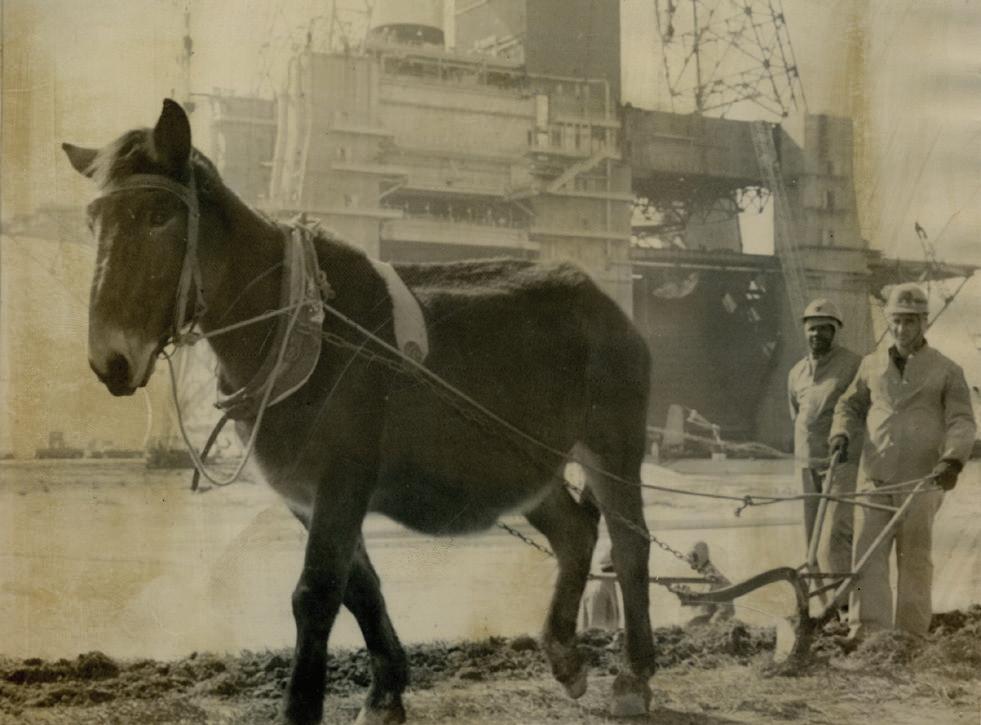

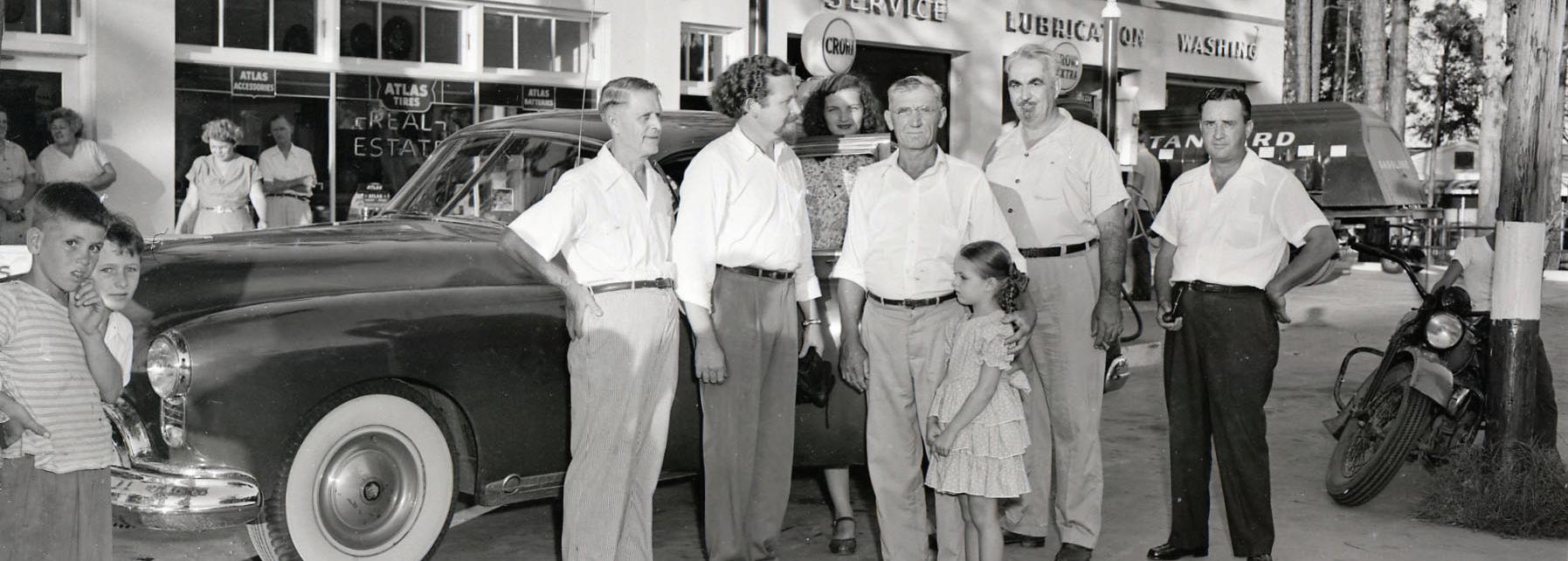

Crossroads: Change in Rural America
July 3-August 14, 2021 • Tuesday-Saturday, 10a.m.-3p.m.. Waveland Ground Zero Hurricane Museum, 335 Coleman Ave., Waveland, MS 39576.
SUMMER LECTURE SERIES SCHEDULE
July 14, 6 p.m.
“Port and Harbor: An Asset to Hancock County” presentation, William Cotter
July 21, 6 p.m.
“Creative Economy of Hancock County” presentation, Steve Barney
July 24, 6 p.m.
“Agricultural Changes of Hancock County” presentation, Dr. Christian Stephenson
July 28, 6 p.m.
Hancock County” presentation, Art Clementin
August 4, 6 p.m.
Anderson and Brehm Bell
August 11, 6 p.m.
“Exploring Rural Mississippi Through Population Studies” presentation, Dr. John Green
Photo Credit: Hancock Historical Society
Historical |
TWO NEW NOMINATIONS TO THE NATIONAL REGISTER REFLECT VARIETY OF GULF COAST HISTORY

 BY: JEFF ROSENBERG
BY: JEFF ROSENBERG
This spring the MS Coast NHA completed two National Register of Historic Places nominations. One for the Scranton Historic District in downtown Pascagoula and the other for the William and Mary McGee House in Pearlington. The nominations will be considered by the Mississippi National Register Review Board on July 15. With approval from the review board, the nominations will be submitted to the Keeper of the National Register at the National Park Service where they will be entered on to the register.
THE SCRANTON HISTORIC DISTRICT is the downtown core of Pascagoula, Miss., approximately 47.5 acres, that consists of century. Initially laid out in the 1870’s, the district has experienced change and development typical for Mississippi downtown commercial districts since then; however, it retains this original layout. The railroad named the town Scranton, which was separate from the village of Pascagoula located on the shore of the Mississippi Sound. These two communities would completely merge under the name Pascagoula by 1910. The district’s oldest buildings date back to the 1880s where most properties were constructed
•Settlement as a railroad town laid out in the 1870s.
•Politics and Government for the wide variety of governing organizations that utilized existing space or built purpose constructed buildings within the district.
c.1880s and c.1972.
line running east/west through the district. From this plan, the current street grid grew, and the establishment of a train station brought commerce and a new location for the Jackson County courthouse. Of course, with a city you need a city hall. So, in 1924, the old Pascagoula city hall that graces the cover of this issue was built on Delmas Avenue. The second was a post-World War II building boom that would peak in the district during the 1950s. Much of the construction resulted in beautiful modern architecture, some examples of which are at the intersection of Magnolia Street and Watts Avenue. These are the Our Lady of Victories School (1947), Jackson County City Hall (1949), the Pascagoula Municipal Building (1956) and the former Pascagoula-Moss Point Bank (19581960). In the past several years there has been renewed interest in downtown Pascagoula, and the creation of a historic district Pascagoula.
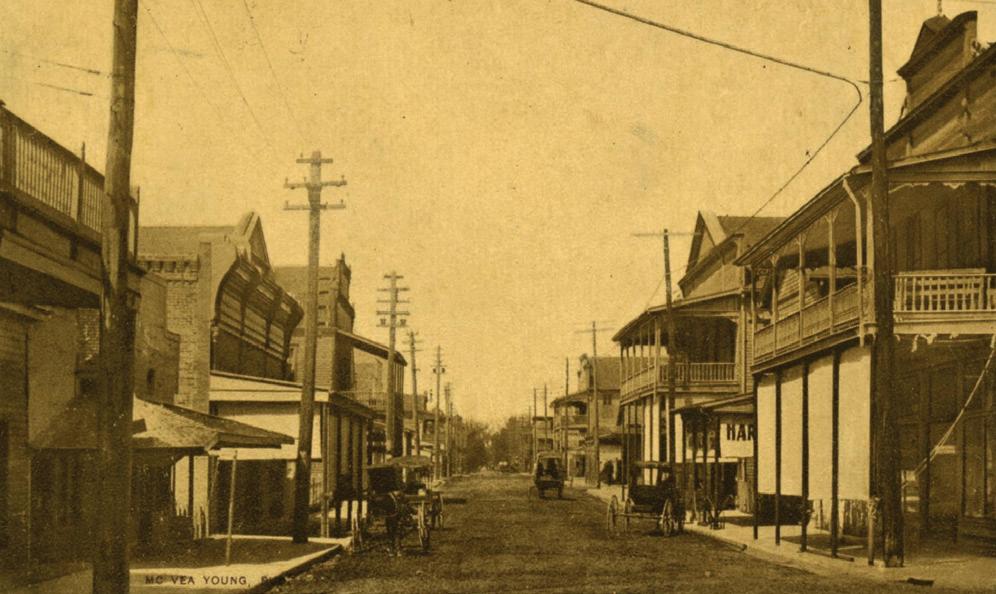 L&N Train Station, Pascagoula, Built 1904, Expanded 1918
Delmas Ave., Pacagoula, Postcard circa 1904
Jackson County Courthouse, Pascagoula, Built 1949
L&N Train Station, Pascagoula, Built 1904, Expanded 1918
Delmas Ave., Pacagoula, Postcard circa 1904
Jackson County Courthouse, Pascagoula, Built 1949
| Embrace Your Cultural Story
THE WILLIAM & MARY MCGEE HOUSE IN PEARLINGTON is an excellent preserved example of a side hall shotgun house that was built in 1904 for William, a lumber schooner captain, and Mary, a schoolteacher.
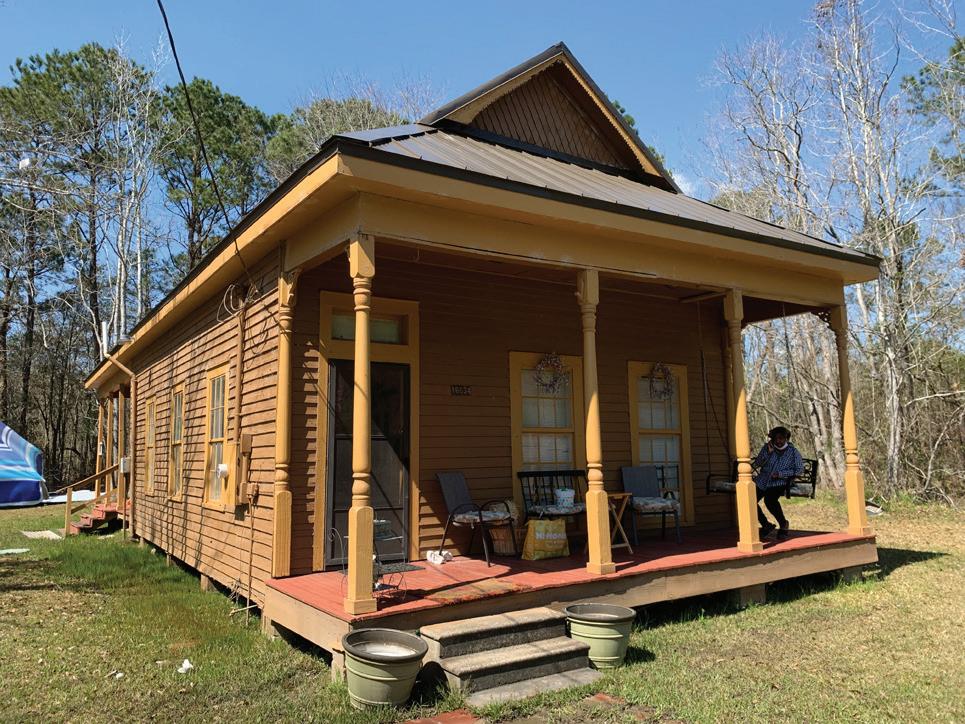
•African American Ethnic Heritage as representative of an African American owned property at a time when such opportunities were limited for African Americans.
contributed to their community: Mary, as a schoolteacher, and William, as the leader of the Sailors Benevolent Society. house, the side hall shotgun, not commonly found on the Mississippi Gulf Coast.
William McGee (c.1872-1930) and Mary E. Slocomb (1874-1966) were married in Hancock County on July 19, 1898. William was born in Pearlington as one of seven children to John and Mariah McGee. Mary was born to George and Martha Slocomb. Being one of her parents’ six children that lived to adulthood, she was reared on Apothecary Street (now State Street) in Bay St. Louis, Miss., and attended St. Rose de Lima Catholic School. After their marriage, William worked as a captain of the lumber schooner, AliceMcGuigin , which delivered lumber to New Orleans from sawmills on the Pearl River. Mary taught elementary school in Logtown and Pearlington and would also teach domestic arts in her home. The couple raised eight children in the six-room house. The youngest of which, Clothilde, owned the home until 2002 when it was sold to the current owner. While shotgun houses can be found across Mississippi, the side hall shotgun is not commonly found on the Mississippi Gulf Coast. In this variant of the form, the front door leads to a small entrance hall. Behind this small hallway is usually a porch, that runs the length of the shotgun and serves as an “outdoor” hallway. Shotgun houses with a side porch can be found in Mississippi, but the inclusion of an enclosed entrance hall is typically used in urban areas, such as New Orleans, to afford the occupants additional privacy.
FOR MORE INFORMATION ON THE NATIONAL REGISTER OF HISTORIC PLACES IN MISSISSIPPI, VISIT MDAH.MS.GOV/HISTORIC-PRESERVATION/BUILDINGS/NATIONAL-REGISTER. WHAT
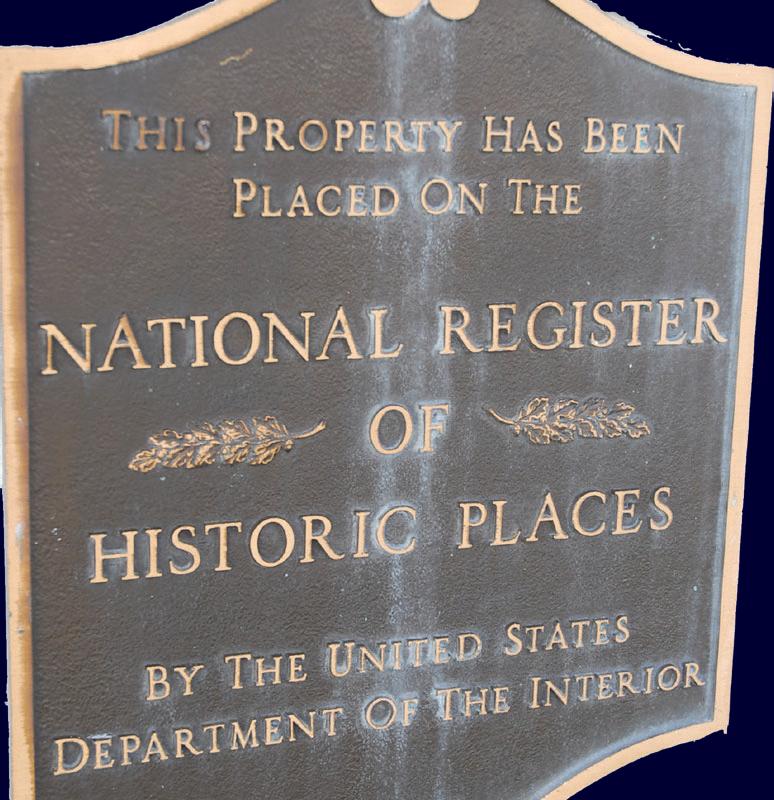

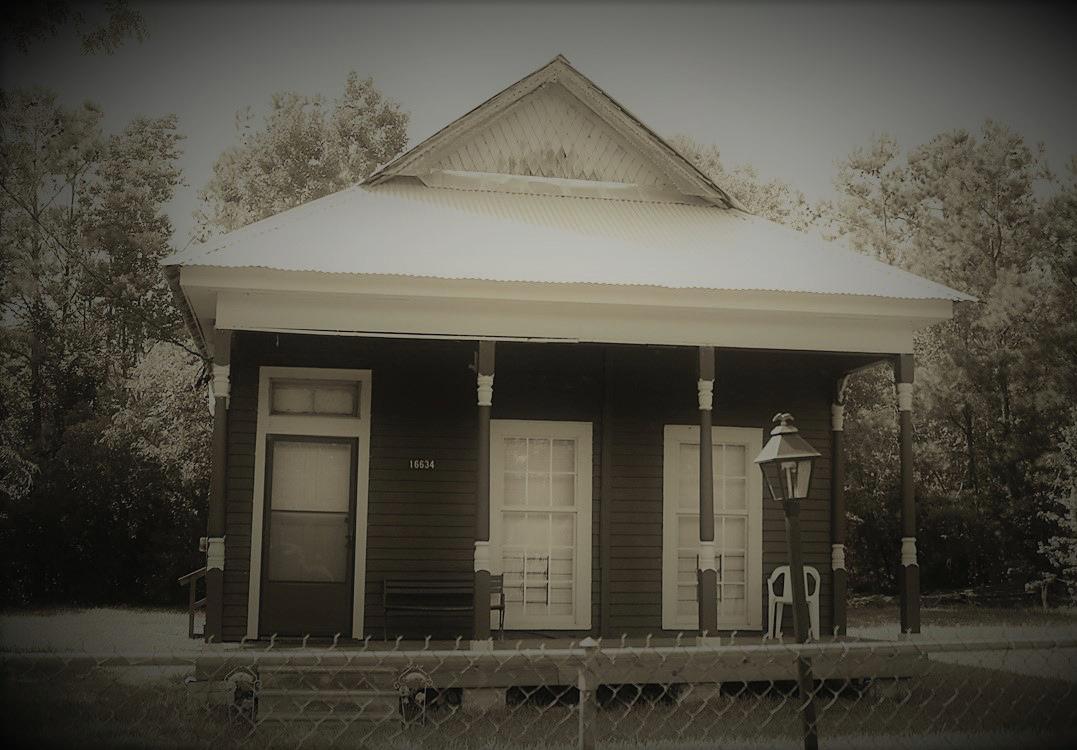
our
connection to the water and how this connection drove and continues to drive habitation in the Mississippi Coast National Heritage Area.
IS THE NATIONAL REGISTER OF HISTORIC PLACES? .
Historical |
William and Mary McGee House, Pearlington
CHARNLEYNORWOOD HOUSE summer at the
BY:JEFF ROSENBERG
The year 2022 will mark the 35th anniversary of the creation of the Sullivan-Charnley National Register historic district in Ocean Springs. One of Ocean Springs’ smallest historic districts, when created it contained only three buildings: the Louis Sullivan House, the Charnley-Norwood House and the Charnley-Norwood Guest Cottage. (For more information on the National Register of Historic Places see page 7 of this issue.)
You may not recognize the name of architect Louis Sullivan, but your life has likely been shaped by his works. While internationally known, few know he drew his inspiration from the Mississippi Gulf Coast. Sullivan owned his retreat on the Bay of Biloxi for 20 years. He has been considered the creator of modern skyscraper design and called the “father of modern architecture.” Influential as an architect, artist, author and critic, he was also a mentor and first boss to Frank Lloyd Wright. Sullivan is best known for popularizing the design term “form follows function” and his distinctive style of architectural ornament.
In 1890, Sullivan made a visit to the Mississippi Gulf Coast city of Ocean Springs with his friends, James and Helen Charnley. The trio was so entranced by the quiet densely wooded little town that they purchased adjacent properties on East Beach Drive where Sullivan set about designing two vacation homes. His Ocean Springs home is where Sullivan claimed to do the “finest, purest thinking.” While Sullivan’s home was destroyed in 2005, the CharnleyNorwood House he designed next door survived. Both homes were influential to residential design during the 20th century and contributed to the popularity of the Ranch house as the century’s dominant house style.
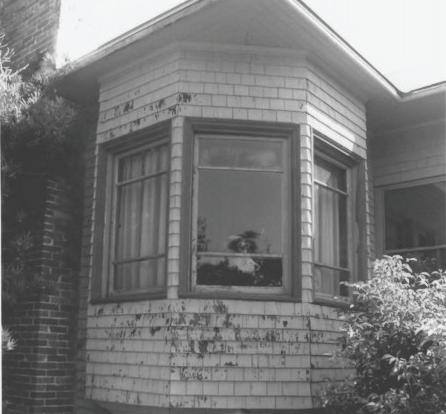

If you are interested in touring the Charnley-Norwood House, drop us a line at heritage@dmr.ms.gov to schedule a tour. Learn more about the National Register of Historic Places on the following page of this issue.
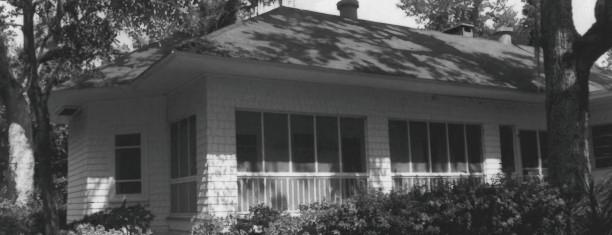 Charnley-Norwood and Guest as photographed for the 1987 National Register of Historic Places nomination.
Louis Sullivan House. 1890-2005
Charnley-Norwood and Guest as photographed for the 1987 National Register of Historic Places nomination.
Louis Sullivan House. 1890-2005
| Embrace Your Cultural Story
Charnley-Norwood House
and
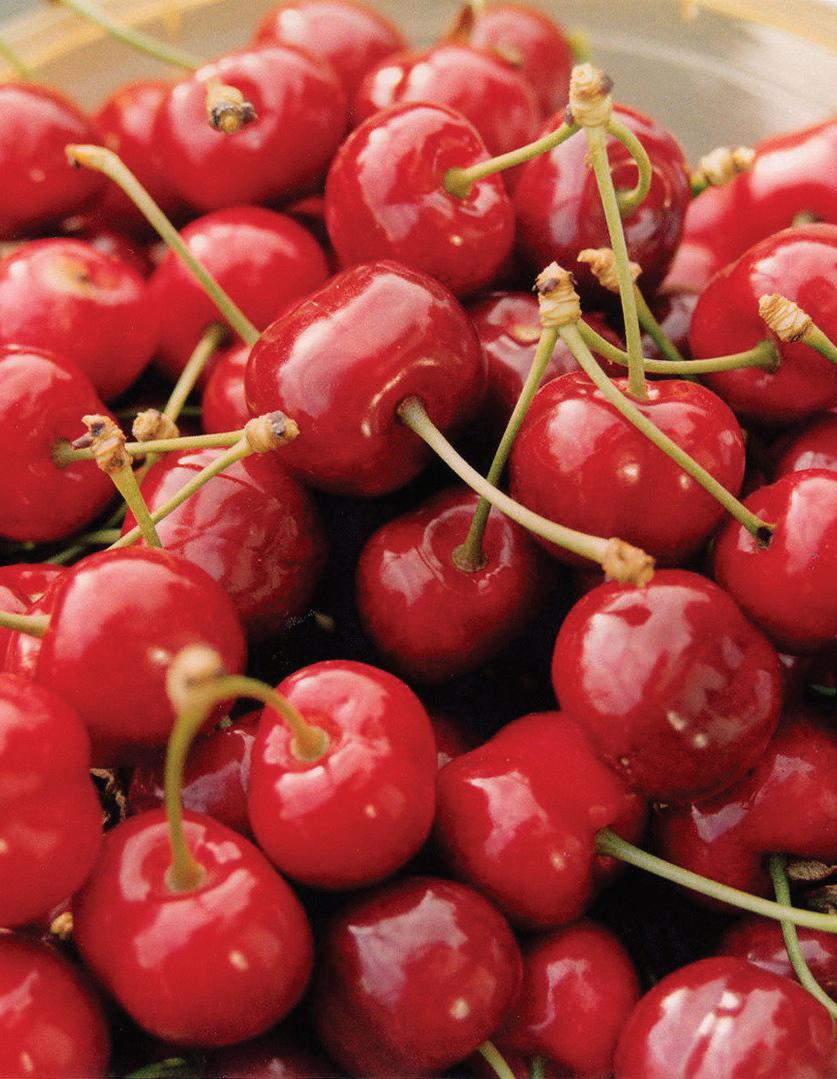
Flavorful |
In our last issue, we featured an article that described how the arrival of the railroad to the Mississippi Gulf Coast changed commerce here forever by opening up new markets for seafood, lumber, naval stores and truck farming (“150 Years Ago The Railroad Transformed The Coast” Embrace your cultural story. Spring 2021, pages 6-7). In addition to carrying goods away to new markets, these trains returned with dry goods, produce and sundries that were previously unavailable on the coast. Fresh cherries were one such item that were a previously unknown luxury, as they do not grow well in the South Mississippi climate.

The lack of lard, oil or shortening in the pie crust makes this a unique recipe. Have you ever tried a similar recipe? You might notice that instructions of baking temperature and length of baking time is omitted. This recipe was printed in an era when homes had a variety of cooking ranges.
Mixtwoteaspoonfulsbakingpowderthoroughlythroughtwocupfulsofflour,addingateaspoonfulofsaltand makeintoagoodcrust.Rollaboutaquarterofaninchthick,butteralargebowlandlinewiththecrust,allowingit tolapoverthetop.Fillthiswithstonedcherriesandhalfacupfulofsugar.Gatherthecrustovertheedgesandput intherangetobake.Letitcookuntilyoucanpassastrawthroughthecrustandbringitoutdry.Servewithplain sauceorsaucewithbrandyflavoring.
“SomeCherryRecipes.”TheGulfportRecord(Gulfport,MS),5August1905.Page7.
Wood, coal, gas and even a few electric powered ranges were in coast kitchens at the start of the 20th century. Gas and electric range ovens made it easier to maintain a set temperature. While a wood or coal range it is easier to cook on based on the foods’ appearance as the temperature can fluctuate based on when the fire is fueled. This is why the recipe gives the instruction that the cherry pie is done cooking when the crust is no longer sticky, rather than a time and temperature at which to cook the pie.

IN 1905, THE NEWSPAPER THE GULFPORT RECORD PUBLISHED THIS RECIPE FOR CHERRY PIE.
| Embrace Your Cultural Story
What is something you think of as something common place on the Coast today that originates from a different area? What goes better with pie than ice cream?









Try this recipe for Cherries Jubilee which comes from the cookbook Encore! Encore by the Gulf Coast Symphony Orchestra Guild. The publication of the cookbook was funded in part by the Mississippi Coast National Heritage Area.





Flavorful |
By: Andrew Barrett
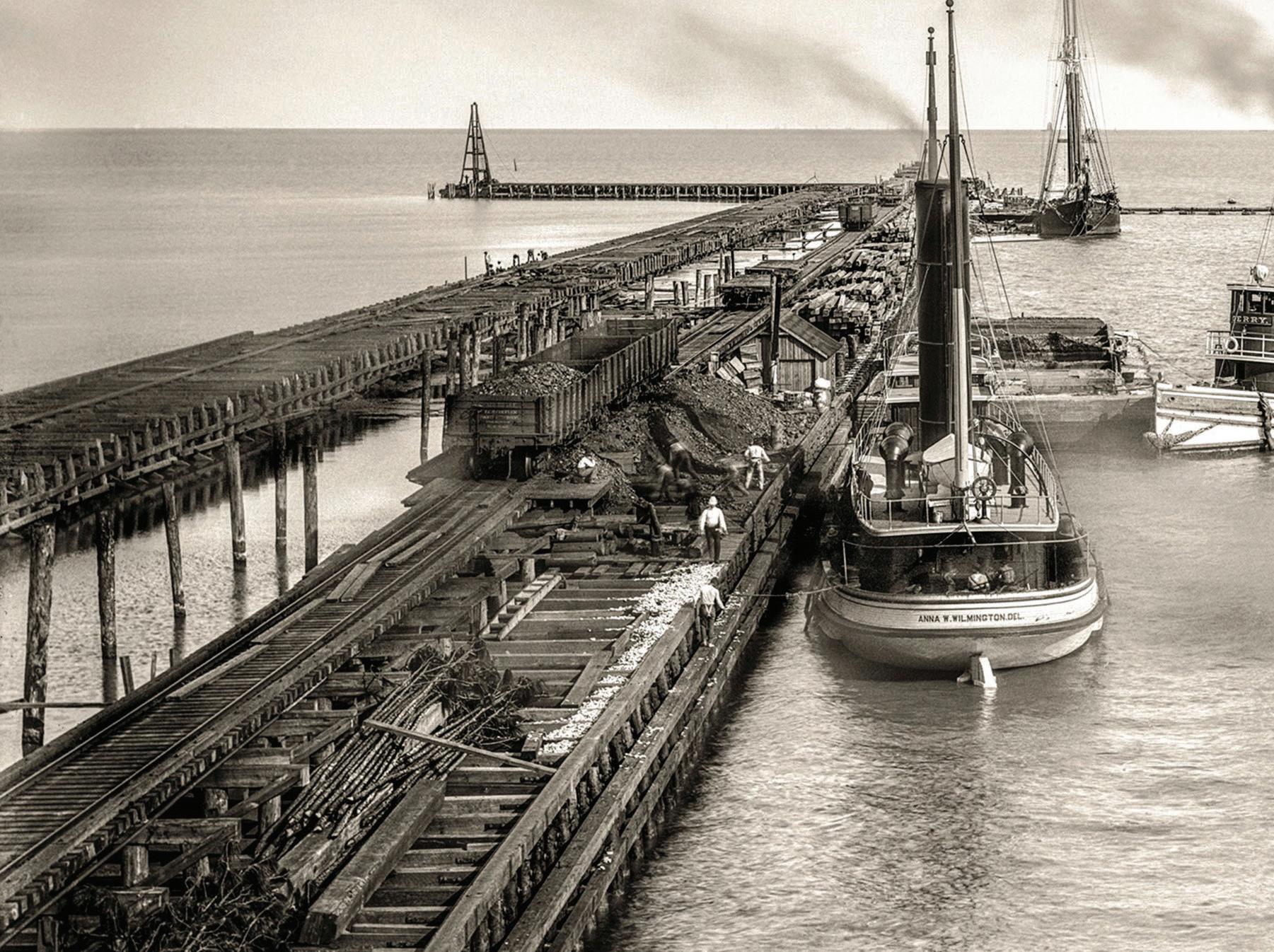
| Embrace Your Cultural Story
Gulfport Harbor, 1902
Driving down the beach on Highway 90 in Harrison County, one can easily pass right by the Port of Gulfport without giving it much thought. For us, this port has always been here. It doesn’t seem unusual or even extraordinary that it is here. The port is a huge economic engine for the Gulf Coast; a vital asset in the ebb and commerce in motion. Why wouldn’t it be here?
The Port covers well over 200 acres and is responsible for moving more than two million tons of cargo every year. It is the third largest container seaport on the Gulf of Mexico and is the country’s second busiest importer of green fruit. The Port of Gulfport, with the accompanying Gulfport Municipal Harbor and surrounding area, is home to numerous entities such as the University of Southern Mississippi Marine Research Center, the U.S. Coast Guard, McDermott International, Dole Fruit Company, Jones Park, the Gulfport Yacht Club and a variety of commercial charter boat services as well as several private, recreational boat slips to name a few.
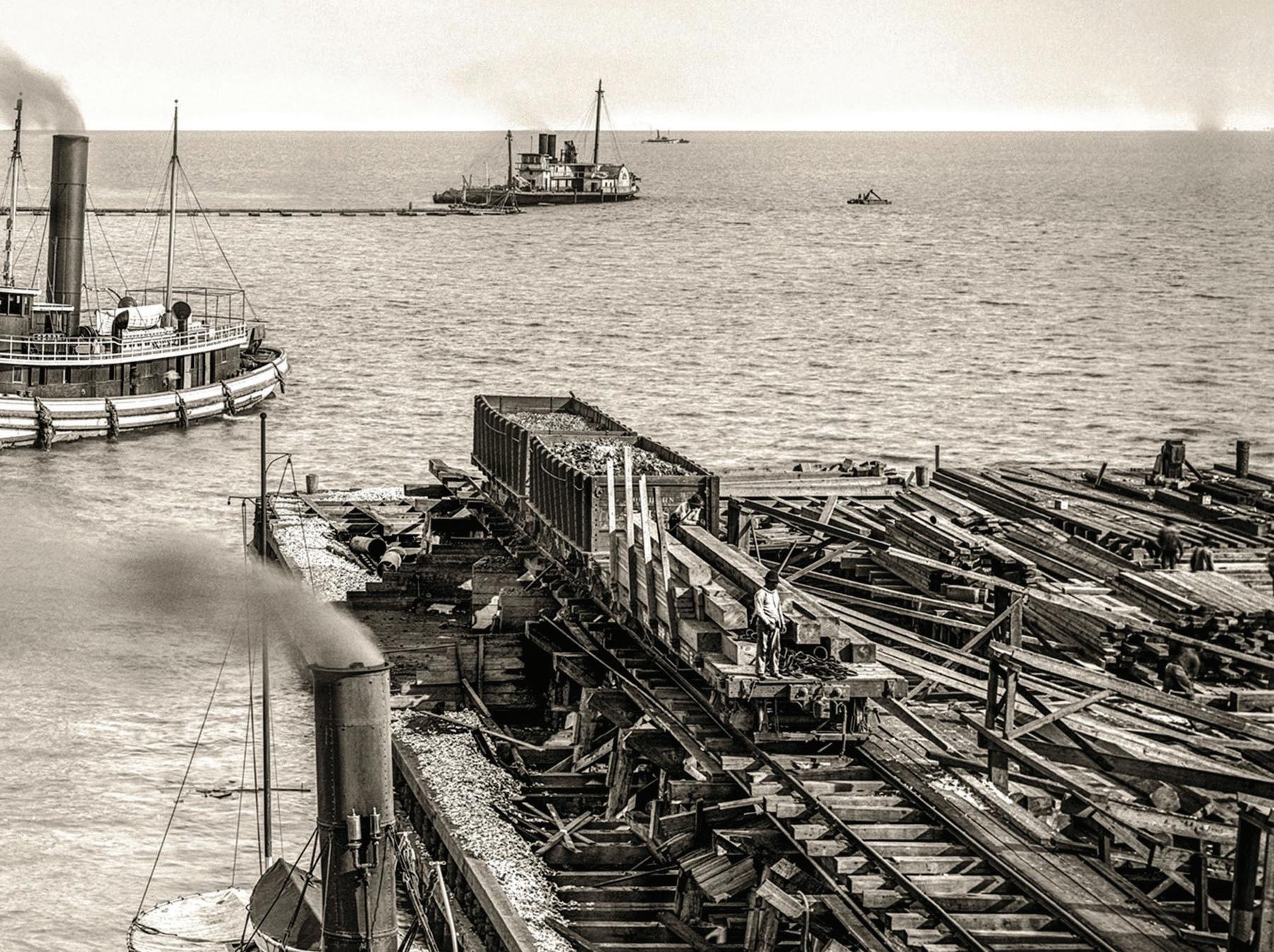
But it may surprise you to know that not all too long ago, this area was a neglected, inhospitable, mosquitoinfested swamp choked with trees and underbrush that was repellent to settlement and seemed preordained to remain a wilderness. Although, even before the Civil War, it was recognized by the State of Mississippi that a deepwater port and a north-south railroad could enable vast economic growth by capitalizing on the huge natural resource of timber in the area, the expected area of
development was farther to the east of this marshy bog. The Mississippi state legislature even approved a charter for the Gulf and Ship Island Company in 1854 to build a railroad predicated on the construction of a deep channel port being established somewhere on the Gulf Coast. Plans for this development were soon hampered by the onset of the Civil War followed by reconstruction and a period of economic malaise in the 1870s. Designs for the Gulf and Ship Island Company would have to be mothballed.

MS Museum of Historical Photography Innovative | 1
Steamer Loading Resin
Photos:
By the 1880s, with the economic picture considerably brighter, viable prospect- in steps William Harris Hardy. Hardy one of the two founders of the City of Gulfport, was a lawyer and former

chartering of the New Orleans and Northeastern Railroad company. While surveying for a railroad line near present day Hattiesburg, Miss., Hardy realized the potential of an intersecting railroad from early 1880s. Hardy later founded the town of Hattiesburg, naming it after his wife, Hattie.
In 1886, Hardy assumed the presidency of the Gulf and Ship Island Railroad and, by 1887, had signed a contract to build the north-south railroad terminating at an accompanying seaport in the newly founded town of Gulfport. A port at this location could take advantage of the natural pass on the west side of Ship Island mainland for larger, commercial vessel access. Construction on the railroad terminus began that same year, but after petitioning the federal government to invest in the dredging and development of the harbor, the request was denied. The federal government did not think the existing landing was worthy of improvements.


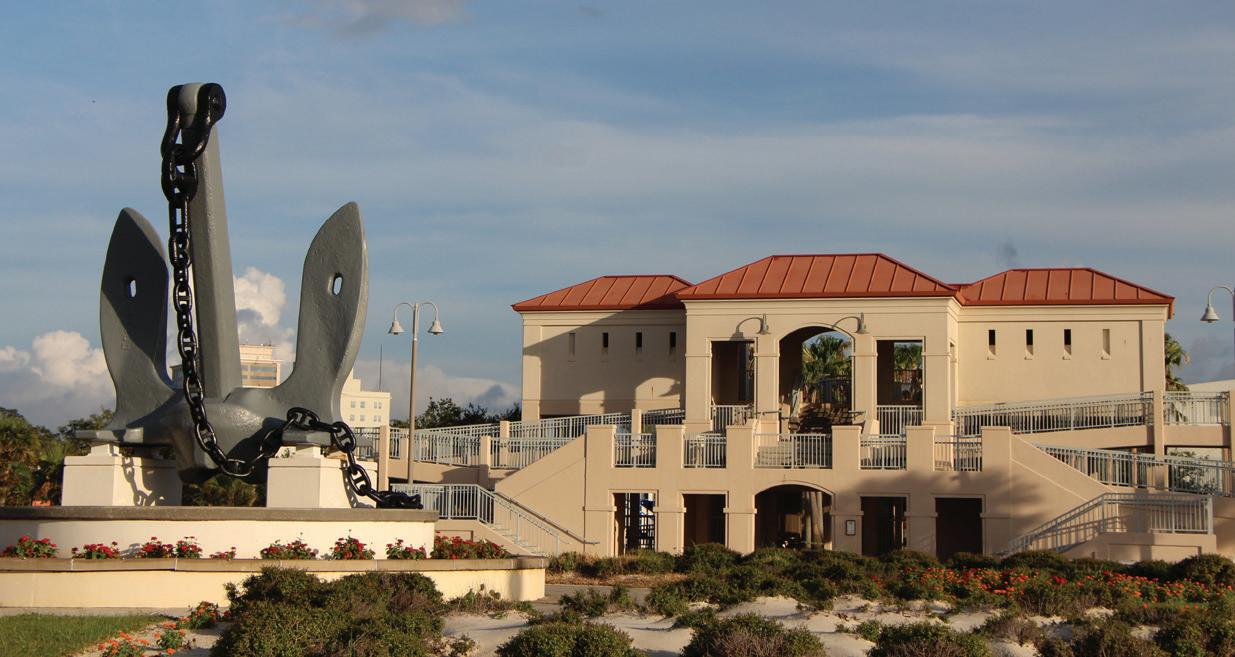
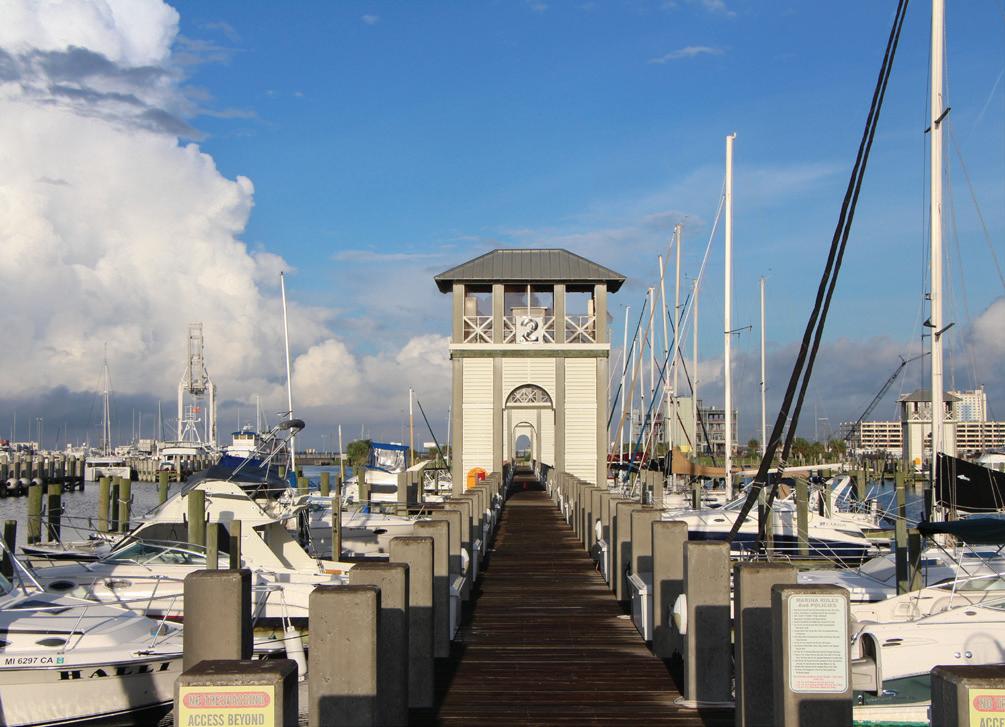
With the onset of yet another economic depression, construction on the Gulf and Ship Island Railroad had come to a halt in 1892, and by 1894, the company declared bankruptcy. Hardy’s vision for the Gulf and Ship Island railroad and harbor, along with the new was desperately needed if the project was ever going to come to

1 | Embrace Your Cultural Story
fruition.
other founding father of the city of Gulfport. Jones, a Union soldier from the Ninety-First Pennsylvania Regiment during of Pennsylvania. Since childhood, Jones had a persistent infatuation with railroads and, after realizing the potential of the coastal Mississippi project, soon rescued the Gulf and Ship Island Railroad from bankruptcy. On the Gulf Coast, he became affectionately known by the moniker “Captain Jones.” Jones, too, appealed to the federal government for funding to dredge a channel for the harbor, but again, the government considered the massive costs of such a project ill-advised and a poor use of federal resources. Undaunted by the federal government’s rejection, Jones arrived on the of his own channel while continuing the construction of the railroad.
In 1902, the harbor and railroad were both nearing completion and ready for unveiling. On January 24, a train arrived from Jackson, Miss. on the Gulf and Ship Island commercial vessel into the new harbor. But the channel was untested by deep draft merchant ships, and its construction

was not sanctioned by the United States government.
the new channel fearing the loss or damage of their vessels. Only by secretly agreeing to pay the captain $1,000, and ensuring the reimbursement for any damages incurred, could Jones get a merchant vessel to agree to navigate the channel for the unveiling ceremony. With hundreds of spectators Trojan , captained by Fillipo Avegno, entered the new harbor with great fanfare.

Through the imagination, grit and determination of both Hardy and Jones, the Port of Gulfport was born; that and a bribe to a leery captain. The Gulfport Museum of History, operated by the Historical Society of Gulfport, has recently commissioned the building of a model of the Trojan that will go on display at the museum to celebrate the unique history of the Gulfport harbor. This laborious task has fallen to Mr. Russell Barnes, a well-known Biloxi author, model builder and historian with a passion for seafaring vessels. The 223-footlong and 43-foot-wide Trojan will be re-imagined at a 1/96 scale which makes the model a little over three feet long. The arduous process of building the model could take as long as
labor of love.
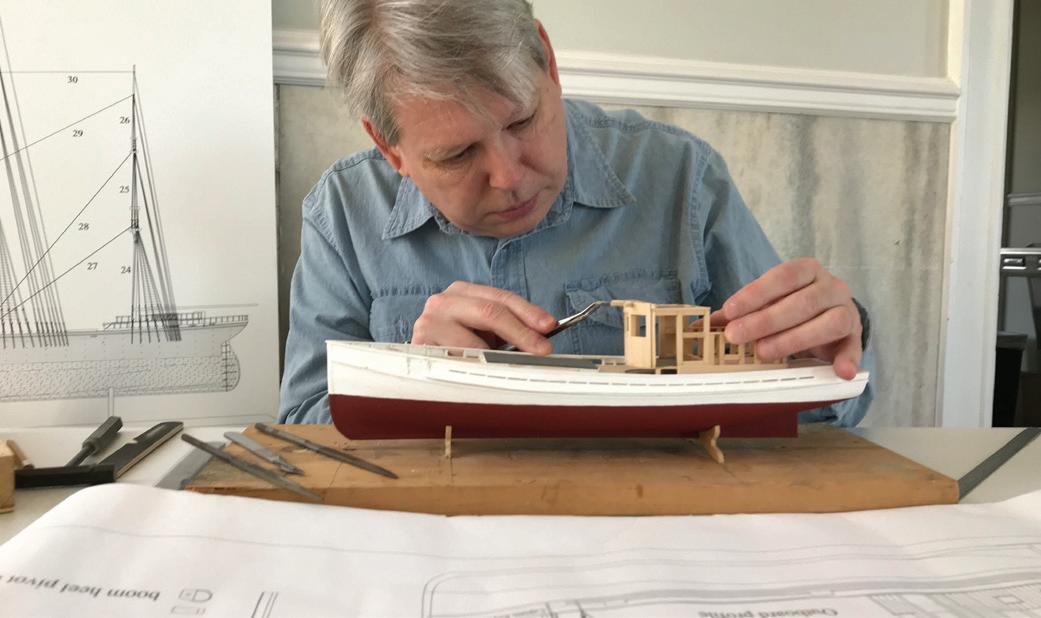
Loading
Lumber Steamer
Trojan
Russell Barnes, Model Builder
Innovative | 1
BUSINESS SPOTLIGHT
Ibusinesses on the Gulf Coast whose services are a must for any die-hard angler: Fisher-Man Guide Service and Shore Thing Charters.


The Gulf Coast Outpost business recognition program is part of the 2016 Nature-Based Tourism Plan for Coastal Mississippi. It was developed for the Heritage Area by stakeholders in the industry. Business owners and operators are recognized through a checklist that focuses on training, sustainability and stewardship. The program is aimed at those companies whose primary business is dependent on the natural environment in Mississippi’s six coastal counties. This includes eco-

1 | Embrace Your Cultural Story
FISHER-MAN GUIDE SERVICE
Whether you are looking for a Bull Red, a box full of Speckled Trout or simply a day of sightseeing around Mississippi’s Barrier Islands, Fisher-Man Guide Service




Wading along in the shallow water equipped with a light and a gig, Fisher-Man knowledge. He is eager to share that knowledge and experience with you on your you pay no fee.
Book a charter or view various offerings at msfisherman.com.

SHORE THING CHARTERS
Black Drum, Sheepshead, sharks and a few others. Charters are typically in shallow protected waters. If you are looking for a trip for you.
Book a charter or view various offerings at shorethingcharters.com.
Innovative | 1
WELCOME TO NEW INDUCTEES
By: Barbara Medlock
We welcome the listed bushinesses below. They join Eco-Tours of South Mississippi in Gautier and the Harbor Garden House of Ocean Springs in the Jackson County Outpost program. These businesses offer knowledge of our coast’s natural environment, and they understand the importance of our numerous, valuable habitats. They work diligently to protect our wildlife, our heritage and our many gifts from nature. Congratulations and job well done!
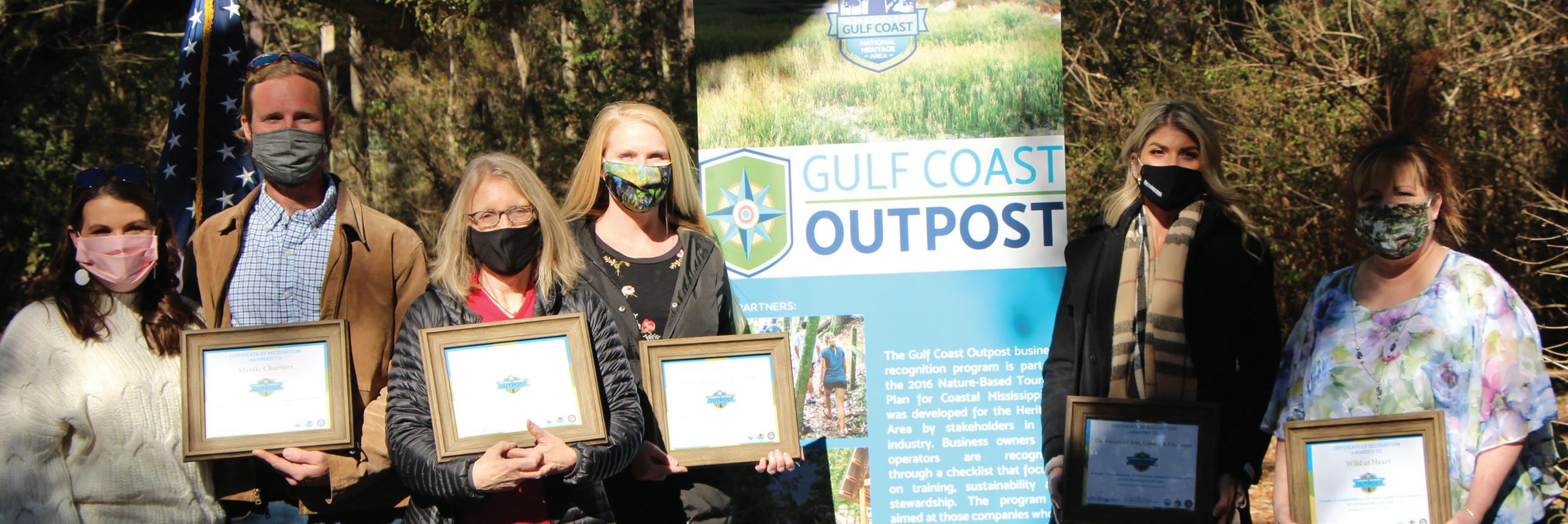
Earlier this year, the Deputy Director of the MS Gulf Coast National Heritage Area, Ms. Rhonda Price, held a presentation for our newly recognized Jackson County Outpost businesses. We are extremely proud to have these amazing businesses and their offerings in Jackson County, Miss.
This art museum celebrates the American Master and Naturalist Walter Anderson. Their mission is to empower lifelong curiosity and connection to the natural world through art.
228-872-3164 • walterandersonmuseum.org
instill a love of learning, encourage creative expression and enrich lives through educational, artistic, and cultural experiences.
228-818-2878 • thefriendsoface.org
Matthew and Casey Hinson are the owners/operators of Mystic Charters. The Mystic is an amazing 65’ wooden boat built in Biloxi in the 1930s. As a labor of love, the Hinson’s restored this beautiful piece of history and offer cruises and over-night stays.
228-235-7439 • mysticchartersms.com
Mary Ann O’Gorman had a vision: a beautiful, secluded retreat surrounded by nature. She now has three private rental cabins on 15 acres of natural woodlands and lovingly landscaped grounds bordering Bluff Creek.
228-238-0739 • twistedrunretreat.com
rehabilitation, and release of injured, sick or orphaned wildlife native to MS.
228-669-7907 • facebook.com/wildatheartrescue
We are also proud to announce our most recent Outpost inductee:
The Center serves as a gateway to the largest, States. Through education and conservation, they connect visitors to nature.
228-475-0825 • pascagoula.audubon.org
]
1 | Embrace Your Cultural Story
By: Jeff Rosenberg
Celebrating the 85th Anniversary of the Rural Electrification Administration


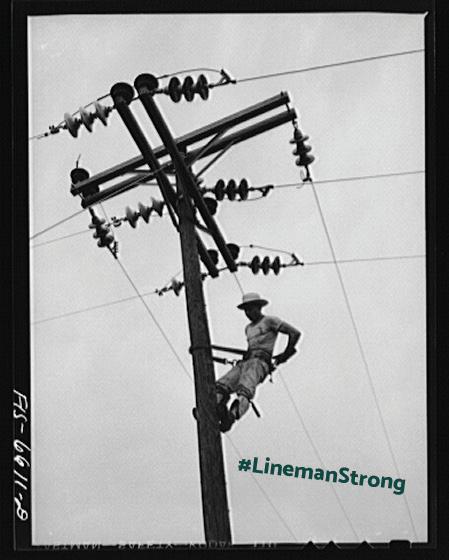


Innovative | 1
BLUEWAY SPOTLIGHT











As part of the Mississippi Gulf Coast National Heritage Area’s Nature-Based Tourism effort, the Blueways program was established to provide explorers an unforgettable experience along miles of beaches, rivers, creeks and bayous. There are currently 15 Blueways, or water trails, that have been mapped out for recreational canoers and kayakers within the six coastal counties in Mississippi.
HERE IS A LOOK AT TWO OF THE BLUEWAYS AVAILABLE FOR THE ADVENTURER IN US ALL:
BAYOU BOGUE HOMA BLUEWAY


Located in southwestern Hancock County, this bayou is home to multi-cultural history including tribal cultures, pioneers, explorers, traders, and settlers from all over the world. Possum Walk is known for its rich African American settlement roots. It was in these waters along the banks of Bayou Bogue Homa that Possum Walk and Logtown residents drew water, washed themselves and their clothing and sourced their everyday necessities. Today, the Possum Walk Heritage Trail exists to offer hiker, bicyclers and kayakers a glimpse into history while showcasing the region’s plant and wildlife.
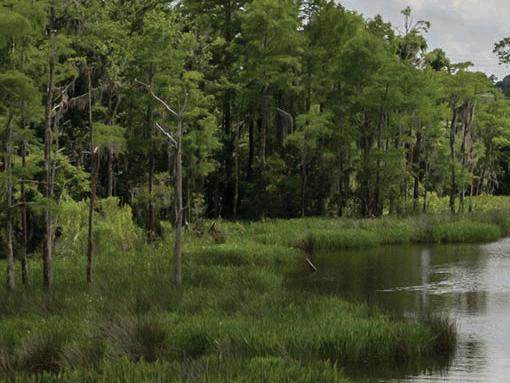
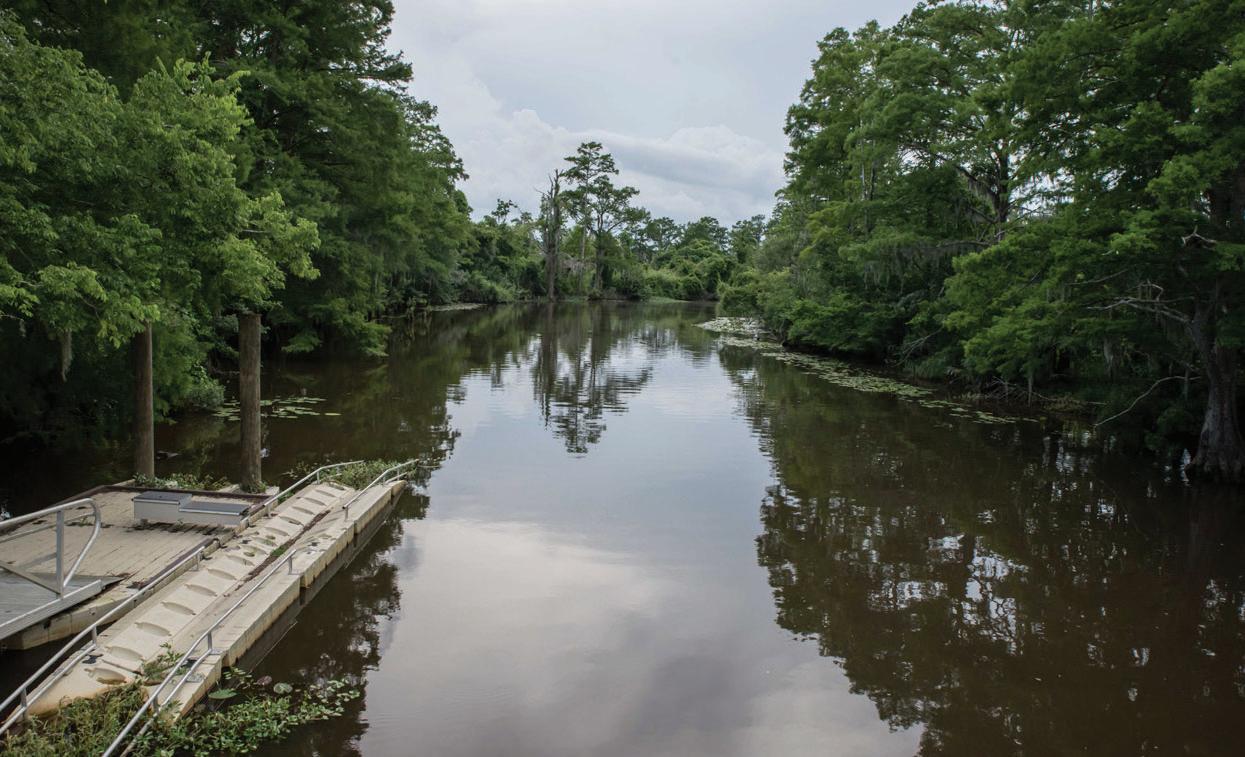
multi-cultural tribal
Where the bayou meets the East Pearl River marshes, ancient bald cypress trees line the banks. Other plants you will see there include wild rice and pickerelweed. You will likely even see an alligator or two, so beware!
Look to the sky and you may see birds circling treetops or gliding in for a fresh catch. Birds of the area include Ospreys, Hawks, Bald nature’s creatures in their natural habitat.
LEARN MORE ABOUT OUR VARIOUS BLUEWAYS AT MSGULFCOASTHERITAGE.MS.GOV TO. DOWNLOAD MAPS THAT INCLUDE LAUNCHES, MILE MARKERS AND POINTS OF INTEREST.

| Embrace Your Cultural Story
RED CREEK BLUEWAY










Red Creek is a coastal backwater stream in Stone County that gets its name from both the red clay bluffs alone the banks and the naturally occurring tannins in the water that produce a reddish stain. The region along the creek is densely forested, making for picturesque views floating downstream in the warm summer months.

The Red Creek Blueway is comprised of four segments. Launching from Highway 26, about 3.3 miles west of Highway 49 near Wiggins, Miss., you will float the Clay Shelves segment. Red clay shelves line the creek, making it clear to see how the waterway got its name. You will even see several small rapids along the trip.
On the Railroad Trestle segment of the creek, located about 4.4 miles south of Wiggins on Highway 49, you can expect to float under an historic and photogenic railroad trestle still in service today. As you float downstream, you will encounter beautiful white sandbars where you can anchor for a while to swim or enjoy a waterfront picnic.

The next segment downstream is the Red Bluff segment. Along this trip you will observe and navigate through the remains of old rail lines, indicative of the early 1900’s timber harvest. Look closely and you just might see the famous “Red Bluff” peeking through the trees.
If you would like to opt for a partial day trip, the Natural Springs segment is just right for you. From Cable Bridge Road to Highway 15, this float may be brief relative to the other segments of Red Creek, but the scenery will have you wanting to slow down and soak it all in. There are natural springs that feed the creek close to the site of historic Ramsey Springs Hotel. Ra ms ey S pr in gs H ot el .
oa
c Natural | 1
t un de r an h is to ri
eatingoysters IN MONTHS WITHOUT AN “R”

 –BY: ANDREW BARRETT–
–BY: ANDREW BARRETT–

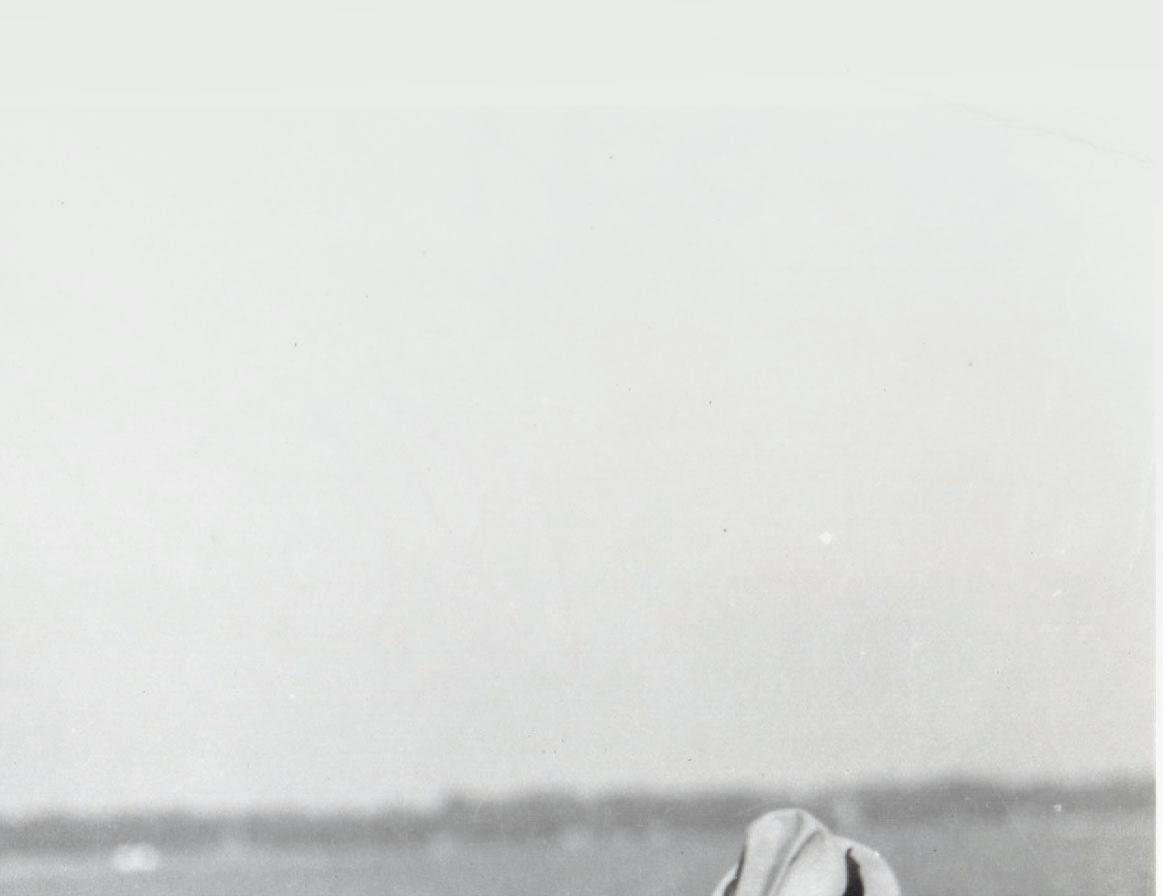

| Embrace Your Cultural Story
Photo: Biloxi Public Library/ Local History and Genealogy Dept.
We have all heard the age-old adage of only eating oysters in months that contain an “R,” but for those of us who relish the idea of slurping down a salty oysteron-the-half-shell drenched in hot sauce at your favorite restaurant this summer, there is good news. The last several decades have seen improvements in oversight of both safe seafood handling and oyster growing-area management. These improvements, coupled with the expansion of oyster farming and the science behind it, have made eating oysters year-round a much safer and more appetizing prospect.
So, why don’t we eat oysters in months without an “R”? Although it is true that there are more environmental risks
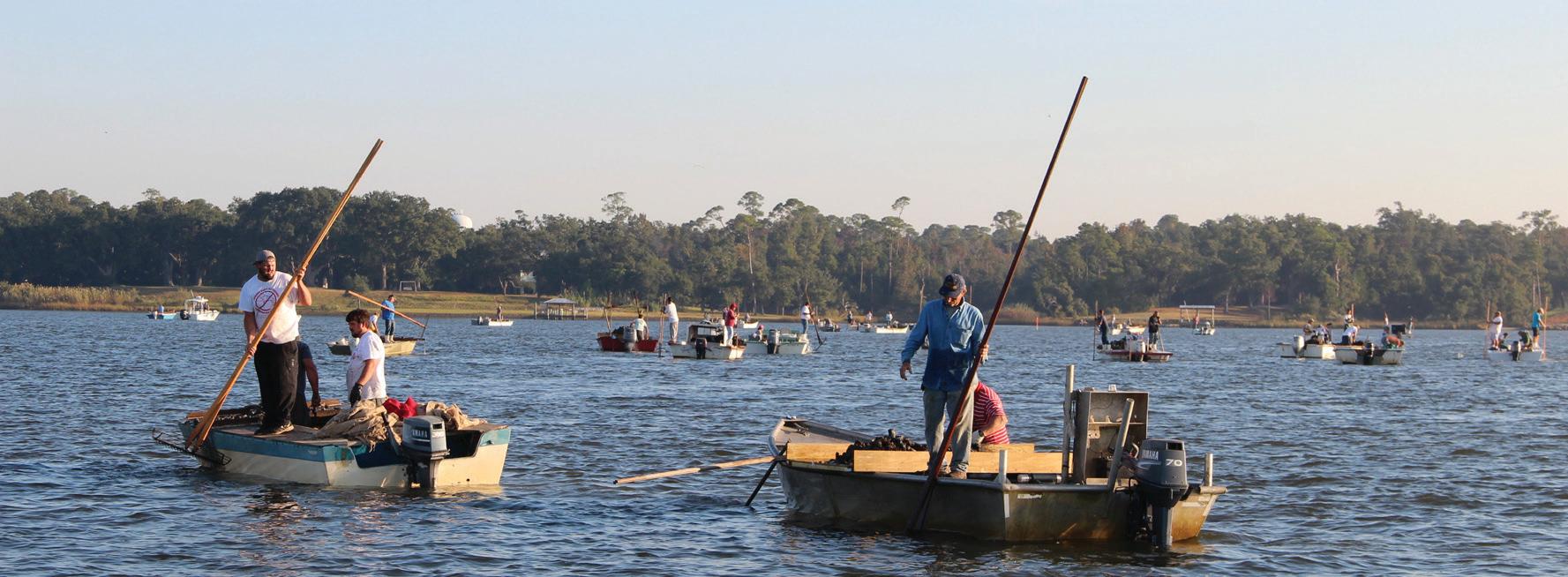

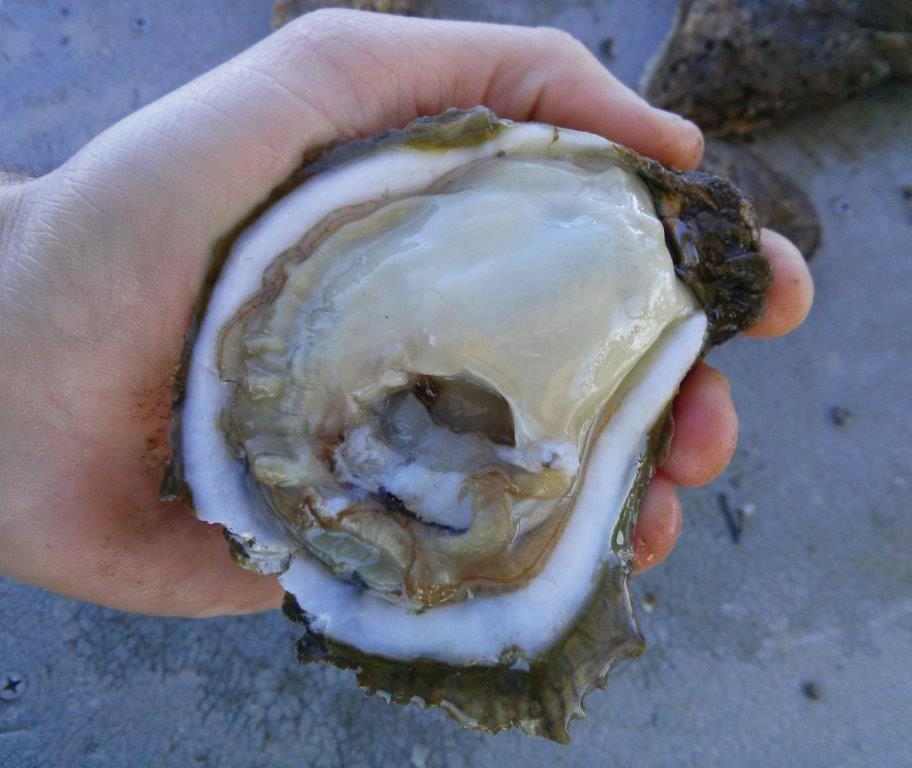
associated with oysters from warm brackish waters, oyster meat quality from traditional on-bottom reefs simply is not as good in the summertime. Traditionally, oysters were harvested from the wild on native reefs that produced the ideal oyster for consumption in the fall and winter months. In the oyster life cycle, spawning generally takes place in the warm summer months of the year; leaving the oyster rather until they can recover from their energy expenditure and fatten back up again in the fall. Most oystermen understood there was no market for oysters in the summer and were happy to suspend the harvest and allow the summertime spawning cycle to replenish the reefs.
Like many old axioms that once rang true, only eating oysters in months with an “R” is an idea that has lost a certain amount of veracity. Thanks to stringent management and advances in technology, plump, delicious oysters can now be found on the menu all year round. The oyster industry today is the most highly regulated
that harmful pathogens could accumulate in the meat of an oyster posing a potential health risk when consumed. For this reason, the Food and Drug Administration has set high standards in the management of every aspect of delivering oysters to your table in the interest of protecting the public health. Growing area waters are routinely monitored and sampled for pathogens by state managers. Time and temperature controls are strictly enforced during products throughout the country. Proper tagging and labeling allow oysters to be traced back to their point of origin from harvest to consumption. The end result of all this vigorous regulation has made consuming oysters a considerably safer endeavor and has expanded our
But what about those lower quality, depleted oysters that are not as appealing in the summertime? That is where the oyster farmer comes into play. The development of oyster aquaculture has enabled the growing and harvesting of oyster farm. Today’s oyster farmers, with a little help from modern science, grow what is known as triploid oysters on their off-bottom farms that do not reproduce and thus will not spawn and weaken in the summer months. This, in conjunction with strict supervision of the growing waters and handling of shell stock, has allowed the harvest and consumption of fat, juicy oysters in even the hottest months of the year. So, as we all venture back to our favorite restaurants this summer from our collective COVID internment, keep in mind that oysters are now always in season. And if you want the very best oysters, be sure to ask for Mississippi farm raised oysters.

Life | 2
history, people, and places of Hancock County as told by Charles Gray, Executive Director of the Historical Society, and long-time ConnectionsMatter: AHistoryofthePeopleandPlacesofHancockCounty , Mississippiand will tell the story of Hancock County from the time of European settlement (1699) until present day. Highlighting founding county residents is in the plans for the fall. Look for their announcements on their website at hancockcountyhistoricalsociety.com.

MS Coast Heritage Community GRANTS UPDATE
The projects of the 2020 Heritage Community Grants are coming to a close, and a new round of projects will soon begin. While COVID-19 may have shifted the scope of some Heritage Community Grant projects, it has done little to slow the great progress our 2020-2021 grant recipients are making. In this issue, we’re highlighting projects in Hancock and Pearl River Counties.
The Land Trust for the Mississippi Coastal Plain received a Heritage Community Grant for the continued restoration work at the Shaw Homestead in Pearl River County. The Shaw Homestead is a late 19th century domestic farm site consisting of several buildings patterns in southeast Mississippi. Grant funded work included repairs to the kitchen and west room ceilings, as well as foundation repairs. More information about the Shaw Homestead can be found at ltmcp.org.

2 | Embrace Your Cultural Story
UPCOMING EVENTS
In partnership with the Smithsonian Institution, the Waveland Ground Zero Museum will host this traveling exhibit that highlights the changes over time in rural Hancock County, through pictorial storyboards, presentations, and storytelling.

The second weekend in September will mark the 40th anniversary of this summer staple festival, the Biloxi Seafood Festival. Located on the Biloxi Town Green, the Biloxi Seafood Festival is a celebration of the Mississippi Gulf Coast’s rich culture, heritage and connection to the seafood industry. The two-day festival features continuous live entertainment, Sunday’s Gumbo Contest, arts & craft booths, children’s activities, and of course, an array of seafood!

The second annual Paddle Paradise event will be held September 25 at the Diamondhead Marina. This event is non-competitive and free. You must bring a free t-shirt and goodie bag.
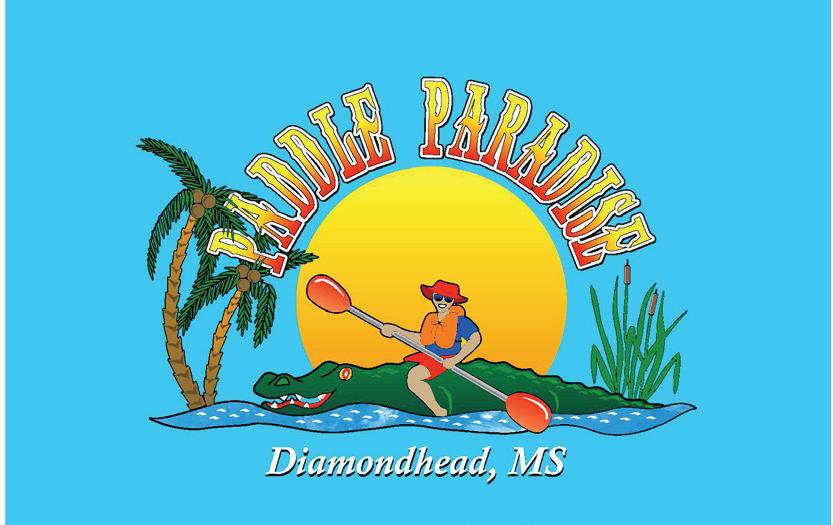
Events | 2
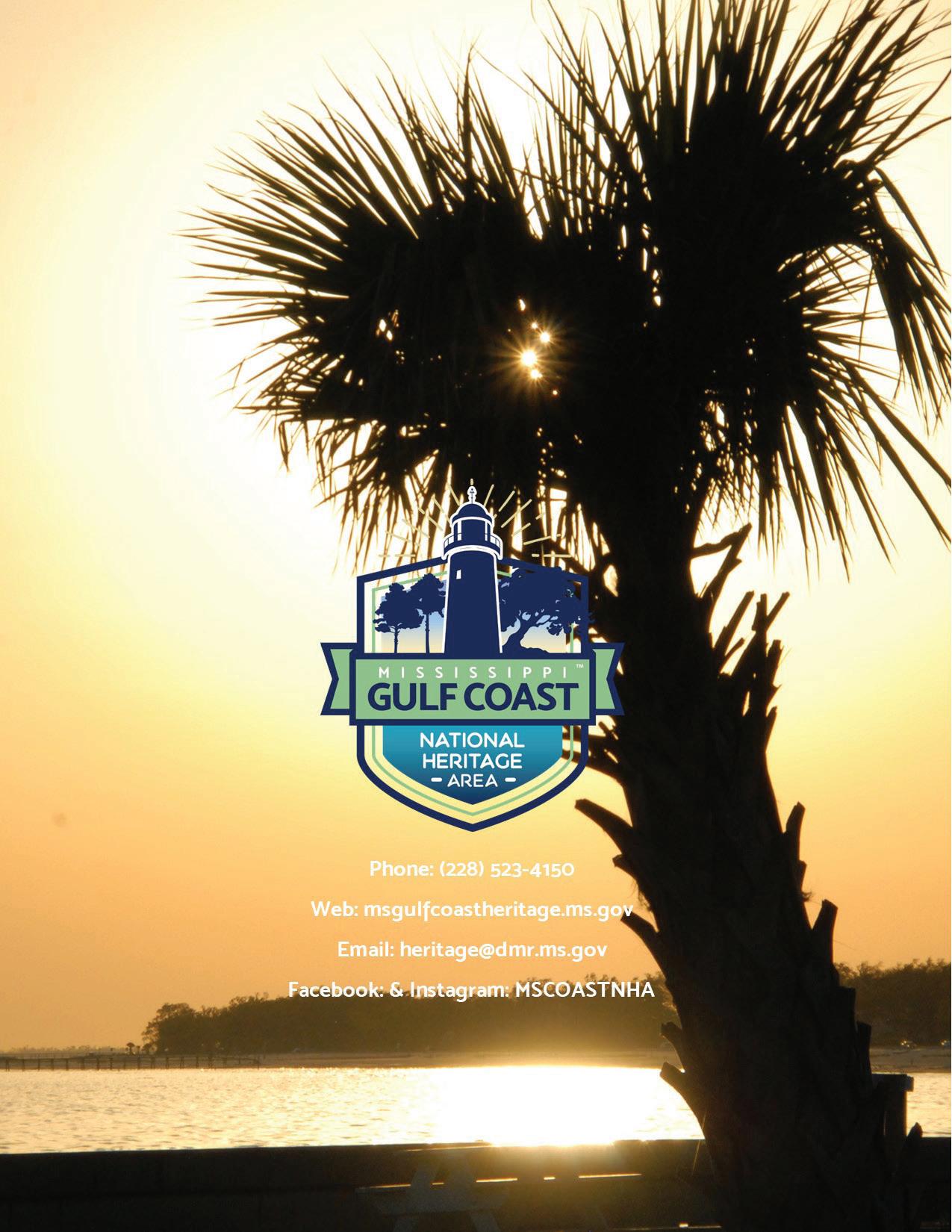




 Rhonda Price MGCNHA Director
Cover photo:
Rhonda Price MGCNHA Director
Cover photo:



















 BY: JEFF ROSENBERG
BY: JEFF ROSENBERG
 L&N Train Station, Pascagoula, Built 1904, Expanded 1918
Delmas Ave., Pacagoula, Postcard circa 1904
Jackson County Courthouse, Pascagoula, Built 1949
L&N Train Station, Pascagoula, Built 1904, Expanded 1918
Delmas Ave., Pacagoula, Postcard circa 1904
Jackson County Courthouse, Pascagoula, Built 1949






 Charnley-Norwood and Guest as photographed for the 1987 National Register of Historic Places nomination.
Louis Sullivan House. 1890-2005
Charnley-Norwood and Guest as photographed for the 1987 National Register of Historic Places nomination.
Louis Sullivan House. 1890-2005







































































 –BY: ANDREW BARRETT–
–BY: ANDREW BARRETT–












